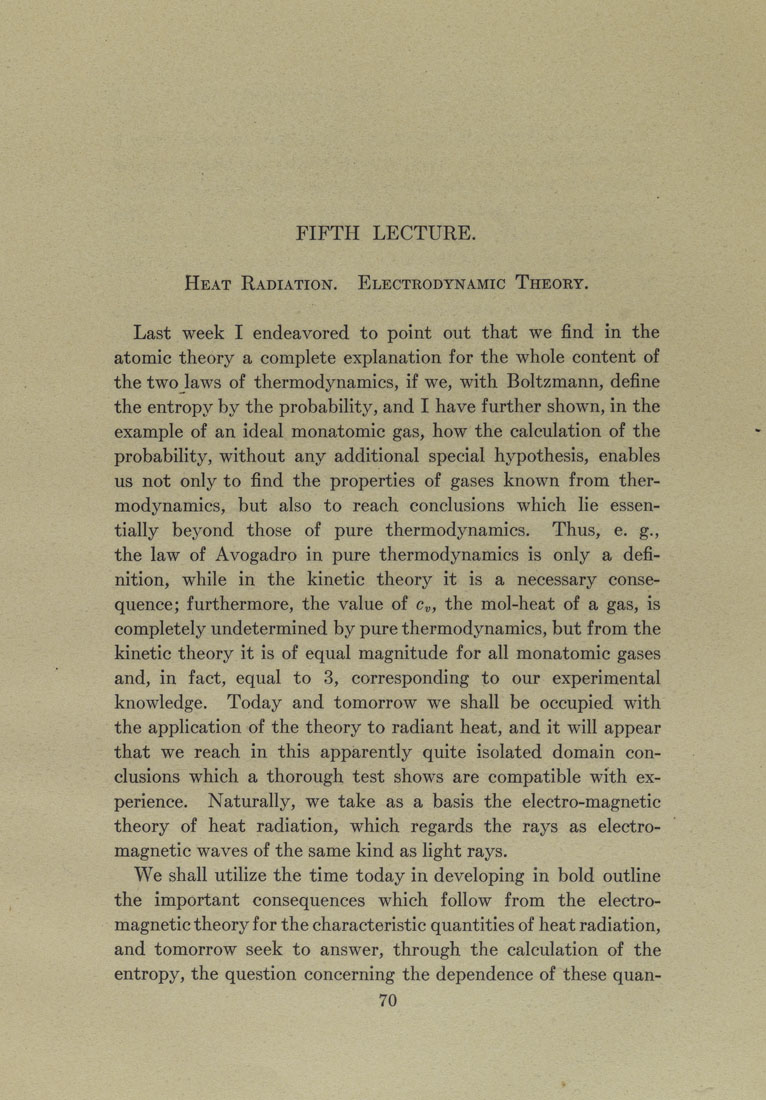FIFTH LECTURE.
Heat Radiation. Electrodynamic Theory.
Last week I endeavored to point out that we find in the
atomic theory a complete explanation for the whole content of
the two laws of thermodynamics, if we, with Boltzmann, define
the entropy by the probability, and I have further shown, in the
example of an ideal monatomic gas, how the calculation of the
probability, without any additional special hypothesis, enables
us not only to find the properties of gases known from ther¬
modynamics, but also to reach conclusions which lie essen¬
tially beyond those of pure thermodynamics. Thus, e. g.,
the law of Avogadro in pure thermodynamics is only a defi¬
nition, while in the kinetic theory it is a necessary conse¬
quence; furthermore, the value of c^, the mol-heat of a gas, is
completely undetermined by pure thermodynamics, but from the
kinetic theory it is of equal magnitude for all monatomic gases
and, in fact, equal to 3, corresponding to our experimental
knowledge. Today and tomorrow we shall be occupied with
the application of the theory to radiant heat, and it will appear
that we reach in this apparently quite isolated domain con¬
clusions which a thorough test shows are compatible with ex¬
perience. Naturally, we take as a basis the electro-magnetic
theory of heat radiation, which regards the rays as electro¬
magnetic waves of the same kind as light rays.
We shall utilize the time today in developing in bold outline
the important consequences which follow from the electro¬
magnetic theory for the characteristic quantities of heat radiation,
and tomorrow seek to answer, through the calculation of the
entropy, the question concerning the dependence of these quan-
70
|








